What Has Apocrypha to Do with Hagiographa? A Reconsideration of the “Editing” of Apocryphal Acts
The following paper was presented at the 2021 Annual Meeting of the Society of Biblical Literature.
Every year in my New Testament Apocrypha course at York University I tell the students about the five so-called Great Apocryphal Acts (Peter, Paul, Thomas, Andrew, and John). I give the usual “facts”: they were composed in the late second and early third century, and were declared heretical due to their promotion of encratism (specifically the refusal to marry) and gnostic-adjacent speeches, but some aspects of the texts remained valuable to the orthodox, so they were trimmed down, sometimes retaining only the martyrdoms, and in these forms they were passed along in hagiographical compendia. As I work through the texts for my forthcoming introduction to Christian Apocrypha for the Anchor Yale Bible Reference series (shameless plug), I am struck by the problems of this simplistic summary. It is influenced by the efforts still somewhat entrenched in our field to establish the original forms of apocryphal texts, and by ancient and Byzantine writers who mention the texts, often in unsympathetic ways.
Photius (Cod. 114), in the ninth century, for example, read all five as a collective work attributed to Leucius Charinos. He did not like what he read and characterized them as containing Gnostic dualism, docetism, substitution, encratism, and “childish” stories of resurrection and of oxen and cattle. Other writers associate them with Manicheans (and it does seem that they did value the texts), as well as groups described as Encratites, Origenists, and Priscillianists. And various titles appear as forbidden books on canon lists. The earliest testimony to the texts by name is Tertullian (for Paul), and Eusebius (for Peter, Paul, John, and Andrew). Bits and pieces of the stories are mentioned by earlier writers, including mention of their missionary areas, by Eusebius and Origen, and in apostolic lists. Based on such testimony scholars have been convinced that the rejected five early acts were torn apart in an effort to rescue what is useful in them for orthodoxy, to in effect “catholicize” their contents. These same views about transmission have plagued discussion of the Infancy Gospel of Thomas because its contents in the manuscripts do not match testimony on the text—though much of that testimony is actually about a different text: the Gospel of Thomas. Even today, some scholars repeat the statement that the infancy gospel once had more gnostic contents, that it has been “catholicized.”
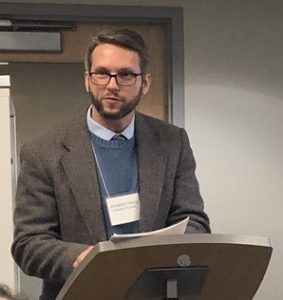
Our field today is increasingly skeptical about what church writers say about the texts we study and about their ability to prevent their transmission. We are also moving away from the pursuit of original forms; informed by new philology, we are learning to embrace the variety of text types reflected in the manuscript evidence. One of our colleagues Jon Henry has presented several times at SBL and elsewhere on testimony related to the Acts of Thomas. At one of these events, the Material of Christian Apocrypha conference at the University of Virginia in 2018, Henry thought about the typical question of “Why did the church continue to transmit texts that were deemed heretical?” But based on the plentiful manuscript evidence on the text, he cleverly inverted it to “Why did a vocal minority try to malign texts that were otherwise widely read and appreciated?” Henry coined a phrase we should all keep in mind: “Don’t ask a heresiologist to tell you something you can learn from a copyist.” And thankfully, eradication does not follow condemnation (not often anyway, or we wouldn’t have anything to study).
Following Henry’s lead I want to focus on what we have, not what we have lost. What do we discover about the transmission of apocryphal acts if we pay more attention to the manuscripts than the testimony of orthodox writers? And what do we learn from widening our field of vision from the Greek world where these texts were born, to include the other major centres of Christianity, where the texts thrived in Coptic, Syriac, Latin, and related languages? And what does leaping the artificial barrier between the categories of apocrypha and hagiographa do for our understanding of how the acts continued to be valued long after they were declared “lost”?
Manuscripts and Apocryphal Acts
Based on manuscript evidence the greatest transmitter of apocryphal acts is not Manicheans or Priscillianists but orthodox Christians. Most of our evidence in Greek comes from menologia, the collections of texts to be read on the feast days dedicated to saints, primarily used in monasteries. There have been numerous menologia over time, but they are chiefly characterized as either pre-Metaphrastic or Metaphrastic. The Metaphrastic Menologion, named for Symeon Metaphrastes, was an attempt to standardize the menologia in the late tenth century (on Symeon generally see Høgel 2002). Some early scholars of hagiography accused Symeon of destroying earlier texts, but Symeon’s process was rather conservative. He took earlier texts (such as encomia by Nicetas of Paphlagonia, which themselves are adaptations of material from the original acts), made stylistic improvements (a process called metaphrasis), and arranged them according to a new calendar date. Symeon did not complete the process of assigning a reading for every day in the calendar; in some manuscripts the missing dates are filled in by other texts, including apocryphal acts. The collection was very popular, so popular that Albert Ehrhard, who worked extensively on this material (1937–1952), knew of 700 manuscripts and more than 100 fragments (for more on apocrypha in the Metaphrastic Menologion see my earlier post “Canonical Apocrypha” in the Menologion of Symeon Metaphrastes).
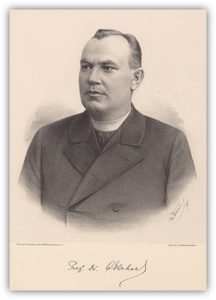
The pre-Metaphrastic menologia are better termed non-Metaphrastic because they continued to be copied after Symeon’s day. Ehrhard lists 90 of these varied collections and among them one can find several apocryphal acts: Thomas, Philip, Thecla, and the Acts of John by Prochorus are the most common (see Ehrhard 1937:1.349–701). Other Greek sources include synaxaria, which can include expanded entries with portions from the apocryphal acts, as well as miscellanies, and the occasional manuscript dedicated to a particular apostle (see, for example, Mount Athos, Mon? Xenoph?ntos, 32 which features texts about Philip). Other than Ehrhard’s work, Pinakes gives us a sense of what manuscripts are available, including sources not known to Ehrhard but it too has some omissions as not all repositories are well-represented (e.g., Mount Athos). There is a Latin counterpart in the Bollandists’ BHLms (though outdated), and NASSCAL’s e-Clavis also lists some additional manuscripts.
As for other languages, Syriac, Arabic, and Ethiopic sources become more plentiful everyday thanks largely to the Hill Museum and Manuscript Library, as do Coptic sources due to ongoing work by Ivan Miroshnikov, Alin Suciu and others who are reconstructing and cataloging the manuscripts, and providing translations for the More New Testament Apocrypha series and other projects. We are getting closer to having much-needed critical editions of the full range of Coptic acts that were translated into Arabic and Ethiopic and became part of the Coptic and Ethiopic church’s liturgical readings. This Egyptian collection (for more on this, see my post The ‘Egyptian’ Collection of Apocryphal Acts, Part 1: Coptic, Arabic and Ge‘ez Sources) was published over a century ago based on one or two Arabic and Ethiopic manuscripts but it has received attention more recently from Alessandro Bausi whose 2001/2002 article describes 31 manuscripts of the Arabic collection, and 31 of the Ethiopic. But many more exist. Armenian and Georgian manuscripts have yet to be fully cataloged and some Church Slavic manuscripts are listed in the well-known study of Aurelio de Santos Otero (1978–1981) but this study is sorely in need of correction and supplementation. In Latin, traditions from the apocryphal acts circulated both independently and as a group in the Apostolic Histories collection (also called Pseudo-Abdias). Guy Philippart (1977) produced an inventory of 90 manuscripts of the collection, though by his own admission this list is not exhaustive. Other Latin sources related to the acts also appear—for example, Jacob de Voragine’s Golden Legend is a transmitter of Latin traditions about the apostles, some taken directly from apocryphal texts (see Roze 1902:1.xiv–xvii for a list of sources).
In sum, the manuscript pool is deeper than is indicated by many of the editions of apocryphal acts (some of which are quite old; e.g., Bonnet and Lipsius 1889–1903). Given this evidence, it is difficult to maintain the illusion that apocrypha, whether acts or gospels, were somehow “lost” in antiquity, or that apocrypha as a category is distinct from hagiography, as earlier editors of apocrypha compendia argued.
Apocryphal and Hagiographical Source for the Five Great Apocryphal Acts
Scholarly interest in the apocryphal acts has tended to focus on the so-called Great Five (Thomas, Peter, Paul, Andrew, and John). Our interest is pulled in that direction by Photius, who is the only writer to name all five as one unit, and other writers that name three or four. Earlier scholars’ interest in “early” texts takes attention away from the texts that are less well-attested in the testimonies even when their manuscript base indicates their superior popularity. Acts of Philip, for example, looks to be roughly contemporary to the other five (perhaps a century later), but receives far less attention (it rarely appears in apocrypha collections) despite the fact that the martyrdom portion is a common feature of the menologia (with around 50 copies listed on Pinakes), and adaptations of the text were made by Nicetas, Symeon, and others. The Acts of John by Prochorus is another example. Éric Junod and Jean-Daniel Kaestli have cataloged around 150 manuscripts of the text (1988), yet the text has mostly escaped scholars’ interest except as a source for portions of the early Acts of John that appear in some manuscripts (note that a full English translation of the text by Janet Spittler will appear in MNTA 3). For most people in Christian history, Prochorus was the Acts of John. This brings us to the point that we have no idea what texts are meant by such titles as “Acts of Peter” or “Acts of John” in the testimonies, not only because multiple texts can go by those names, but because the content of the texts vary so greatly over time. Nevertheless, for pragmatic reasons the remainder of this paper will focus on the Great Five. So what, then, do the manuscripts tell us about the transmission and reception of the five earliest apocryphal acts?
1. Thomas (CANT 245; ECCA 125)
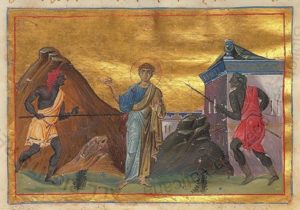
The Acts of Thomas is the only one of the Great Five that is fully extant. At the same time it contains perhaps the most material that one presumes the orthodox would find objectionable—including the wedding banquet where Thomas convinces the bride and groom to remain chaste (Act 1) and the conversion of the nobles in the court of King Mazdai who also adopt a life of chastity (Acts 10–13). Thomas presents no greater reason for us to doubt the theory that the apocryphal acts were systematically “catholicized.”
I said Thomas is complete, but the available editions and translations note that only two Greek manuscripts contain the entire text, as well as four in Syriac. Keep in mind though, that “complete” really just means longer; this is a text that has been variously expanded and shortened over time. And there may be other manuscripts that contain the “longer text.” The most recent edition of Thomas in Greek is by Max Bonnet in 1903, who used 21 manuscripts; another 60 are known, ranging in date of composition from the ninth to seventeenth centuries, primarily transmitted in menologia. This makes the Acts of Thomas one of the most popular apocryphal Christian texts—this is not a suppressed text. None of the unpublished manuscripts appear to contain the complete text but they don’t just contain the martyrdom either. The most popular section is the first two acts, which includes the story of the chaste bride and groom.
As for the Syriac, which may be the original language of the text, no proper edition has yet appeared. Three manuscripts have been published separately; twelve are now known, but no effort has yet been made to describe their contents (or at least nothing has been published; Paul-Hubert Poirier has been working on the full range of evidence for some time). Also e-Clavis lists ten Garš?n? manuscripts; their contents are uncertain—and, alas, I don’t have the capability to check them—but at least two are promising because their texts are quite lengthy.
The Acts of Thomas was transformed over time by hagiographers (by Nicetas of Thessalonica [BHG 1832; CANT 247; ECCA 297], Nicetas of Paphlagonia [BHG 1842; ECCA 294], Symeon Metaphrastes [BHG 1835; CANT 248; ECCA 228]; and entries in the Menologion of Basil II, and the Constantinople Synaxarion; the Latin sources include the Passion of Thomas [BHL 8136; ECCA 296] and the Miracles of Thomas [BHL 8140; ECCA 295], both of which appear in the Apostolic Histories collection). But these texts have attracted little attention because there are no formal critical editions and no modern translations. What I can say about them is that the Latin Miracles of Thomas contains virtually the entire text but in abbreviated form and the Greek texts frequently contain Acts 1, 2, and 10–13. The same sections are found in some manuscripts of the Acts of Thomas and His Wonderworking Skin (CANT 246; ECCA 504; found in eight Greek manuscripts; plentiful in Coptic-Arabic-Ethiopic; a version also in Church Slavic), which is the Acts of Thomas in the Egyptian collection. This text also contains some pro-ascetic stories of its own— after conversion Arsenoë will not sleep with her husband Leucius; Jesus appears to a would-be groom and tells him not to marry. The lesson here is that Acts of Thomas has not been “catholicized,” nor at all times reduced to little more than a martyrdom. Its support of ascetic living remains intact (and would be particularly attractive to the monks who transmitted the text) and the text has been transmitted, even translated, far and wide, in the East and the West in hundreds of manuscripts.
2. Peter (CANT 190; ECCA 933)
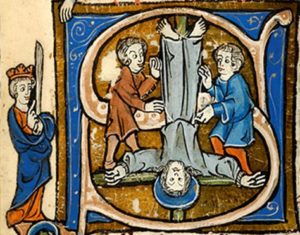
There is no complete Greek witness to the Acts of Peter. Determination of its original contents requires the consideration of several sources (on these see Poupon 1988). The Latin Vercelli Acts (or Actus Vercellensis) and the Syriac History of Simon Cephas (CANT 200; ECCA 252) are translations and adaptations of a common source that may be the Acts of Peter known to Eusebius, or they could very well be witnesses to another text entirely. One episode occurs in a fourth-century Greek fragment from Oxyrhynchus (P. Oxy. 849) hinting at the early existence of the Greek Acts but it may be a witness to a single episode, not the entire text. Part of the Vercelli Acts overlaps with three Greek manuscripts of the Martyrdom of Peter, and this martyrdom is also known in numerous languages (Coptic-Arabic-Ethiopic, Armenian, Georgian, Church Slavic, and Latin [Pseudo-Linus; CANT 181; ECCA 573], as well as adaptations in Greek and Latin, frequently combined with the martyrdom of Paul (on these adaptations see Eastman 2015; also Symeon Metaphrastes; =BHG 1493; CANT 196; ECCA 526). The martyrdom is quite distinct from the acts and may have been added later in transmission; only here do we see any association with ascetic teachings (Peter gets into trouble when his female converts refuse to sleep with their male partners). The acts proper is otherwise fairly benign except for an episode in which Jesus appears to a group of women in multiple forms: an old man, an adolescent, and a boy (ch. 21). Mind you, polymorphy is such a common topos in apocryphal acts that it can scarcely be considered christologically controversial. One other episode is potentially problematic: the Greek and Coptic martyrdom accounts, as well as the Vercelli Acts, feature a middle-Platonic description of the fall of the first human in one of Peter’s final speeches (ch. 38); this is frequently removed from the reworkings of the martyrdom. Arguments have been made for including the story of Peter and his daughter in the original Acts. It is found today in Coptic (in the Berlin codex, as a single “Act of Peter” [CANT 190.I; ECCA 177]) and in Latin in the Acts of Nereus and Achilleus (ECCA 876). Other isolated stories also may be excerpts, particularly the Act of Peter in Azotus (which is titled “From the Acts of the Holy Apostle Peter” in its only manuscript; ECCA 690) but they can just as well be new tales working within the “thoughtworld” of the early acts.
Why does the “original” Acts of Peter, for the most part, no longer exist? That’s a bit of a mystery, especially given that it is apparently so innocuous. Maybe the issue is that another text presenting the conflict between Peter and Simon Magus was more popular: the Pseudo-Clementine Romance (CANT 290; ECCA 638). The original form of this text, too, is difficult to reconstruct but manuscript witnesses are plentiful (Homilies is complete in 2 Greek manuscripts and 3 excerpts, as well as a large portion in 1 Syriac manuscript; also 30 copies of the pre-Metaphrastic and more than 100 of the Metaphrastic epitomes, and these were translated into Georgian, for the former, and Church Slavic and Arabic, for the latter; the Latin Recognitions is extant in over 100 manuscripts, as well as portions in Syriac, and smaller pieces in Armenian and Arabic) and it was quite popular in a variety of derivative forms (the Book of the Rolls [ECCA 950], the Passion of Peter [CANT 195; ECCA 893], and Preaching of Peter to Faustus [CANT 204; ECCA 845]). It is doubtful that the promotion of asceticism is a reason for the Acts of Peter’s demise because asceticism is found all over the surviving traditions; the Preaching of Peter to Faustus for example, has Peter preach “blessed are those who have wives, and who are as if they had them not, for they shall become the children of life, and inherit everlasting life” (adapted from Acts of Paul 3:5); and in the Acts of Nereus and Achilleus the two characters convince Domitilla, cousin of the emperor Domitian, to refuse marriage, because her husband would be abusive and unfaithful and childbirth is uncomfortable and degrading, but virginity is pleasing to God and dear to angels.
3. Paul (CANT 211; ECCA 779)
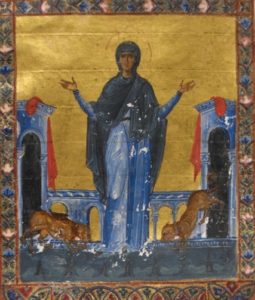
That the Acts of Paul, or at least the part focused on Thecla, was known to Tertullian (de Baptismo 17) is assured and is used as a benchmark for dating all five of the Great Acts. The Thecla portion of the Acts of Paul (CANT 211.III; ECCA 787) is the most well-attested—in 50 Greek manuscripts, as well as Syriac, Armenian, and Church Slavic, and adapted into several other Greek forms usually categorized as hagiographa (Homily 97 on Thecla by Severus of Antioch [ECCA 476], Life and Miracles of Thecla [BHG 1717–1718; ECCA 792; in two forms in 26 manuscripts], Martyrdom of Thecla by Symeon Metaphrastes [BHG 1719; ECCA 206], Panegyric to Thecla by Ps.-John Chrysostom [BHG 1720; ECCA 475]). Three other sections also circulated independently: the Corinthian Correspondence (CANT 211.IV; ECCA 169; in Greek, Armenian, Latin, Syriac [in commentaries by Ephrem and Aphrahat]), the Martyrdom (7 Greek manuscripts, Coptic-Arabic-Ethiopic, Armenian, adaptations in Greek, including an Encomium of Nicetas of Paphlagonia [BHG 1472n]), and Latin [Passion of Paul; CANT 213; ECCA 149]), and the Ephesus Act (ch. 9, found in the Coptic P. Bodmer XLI). Another portion of the text is preserved only in the Ethiopic Epistle of Pelagia (CANT 211.VI; 5 manuscripts). But there is early evidence for a more complete text joining these materials together: a fragmentary sixth-century Coptic manuscript divided between Heidelberg and London (Heidelberg, Universität Heidelberg, inv. Kopt. 300+301 + London, British Library, Or. 6943) includes the Acts of Thecla, 3 Corinthians, the Martyrdom and portions in between; and a third/fourth century Greek manuscript in Hamburg (Hamburg, Staats- und Universitätsbibliothek, Pap. bil. 1; also fragmentary) includes episodes in Ephesus, Corinth, and Italy. Four other Greek papyri and another in Coptic provide more of the text (on these manuscripts, see the e-Clavis entry on the Acts of Paul).
The pattern of preservation for the Acts of Paul is similar to the Acts of Thomas, in the sense that key portions are preserved, not simply the martyrdom, and one of these key portions (Thecla) promotes asceticism. Like the Acts of Peter, there appears to be no good reason for its loss; it circulated as recently as Nicephorus of Callistus in the fourteenth century, and he mentions it favorably (Eccl. hist. 2.25).
4. Andrew (CANT 225; ECCA 788)
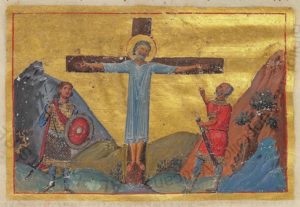
The principle source for Andrew is Gregory of Tours’ Miracles of Andrew (CANT 225.II; ECCA 244), composed before 593 (editions of all sources in Prieur 1989). It is described in scholarship as an epitome, and Gregory admits to having edited the text to remove its prolixity (verbositas). He does not include the martyrdom but directs readers to another text for the details: either the Epistle of the Presbyters and Deacons of Achaea (CANT 226; ECCA 888; also available in three Greek translations) or the Passion of Andrew (CANT 231; ECCA 236), both transmitted along with the Miracles in the Apostolic Histories collection. So this particular text, or combination of texts, is well-documented. The Greek evidence, however, is meagre: seven manuscripts with divergent versions of the martyrdom, and another martyrdom account known as the Martyrium prius (CANT 227; ECCA 904; 9 manuscripts). The hagiographers provide four interrelated accounts of Andrew’s preaching journeys (focusing on Pontus and Scythia) culminating in the apostle’s martyrdom: the Story of Andrew (CANT 229; ECCA 340; in 6 manuscripts), the Life of Andrew by Epiphanius the Monk (CANT 233; ECCA 557; in 15 manuscripts and a Church Slavic translation), the Encomium on Andrew by Nicetas of Paphlagonia (CANT 228; ECCA 918; in 19 manuscripts), and the Hypomnema on Andrew by Symeon Metaphrastes (CANT 234; ECCA 433)
A Coptic manuscript (Utrecht, Universiteitsbibliothek, B4.13, B3.11, B4.12, pp. 9–10, 13–15) offers another independently circulated “Act,” this one paralleling Gregory’s Miracles ch. 18 in a much longer form; also important is the Armenian martyrdom which is important for preserving portions missing in the original text. Comparison of the speech materials in the Greek and Armenian martyrdoms indicate some trimming of speeches for that portion of the text, but it’s not clearly for “catholicizing”—like Peter’s speech to the cross, the text shows the influence of Neo-Platonism, but not gnostic theology. Andrew’s speeches also advocate asceticism, but the characters who choose this life need not be seen as a model for all Christians.
It is again unclear what early church writers read as the “Acts of Andrew.” Eusebius is our earliest witness, but he provides only the title; we know what Gregory read in the seventh century, available to him in Latin and including the Acts of Andrew and Matthias (CANT 236; ECCA 517), which survived on its own and is well-attested in the manuscript tradition (37 Greek manuscripts, and translations into Coptic-Arabic-Ethiopic, Syriac, Church Slavic, Latin, Armenian, Georgian, and Old English). To Egyptian Christians, Andrew and Matthias is presented as the Preaching of Matthias; the Preaching of Andrew is the Acts of Andrew and Philemon (CANT 240; ECCA 161). This text is coupled with an entirely new Martyrdom of Andrew (CANT 235; ECCA 310) and one particular Coptic manuscript (MONB.DN) combines Andrew and Philemon with several other texts starring the apostle: Acts of Andrew and Bartholomew (CANT 238; ECCA 319; also in two Greek manuscripts and presented as the “Preaching of Bartholomew” in the Egyptian collection), Acts of Andrew and Paul (CANT 239; ECCA 464), and Acts of Peter and Andrew (CANT 237; ECCA 755). Even though little of the early Acts of Andrew remains today, there is no shortage of apocryphal accounts of Andrew’s exploits. Gregory provides another explanation for why some found the original acts unattractive: they were too “wordy.” Of course, this didn’t prevent the copying of the Acts of Thomas and the exceptionally wordy Pseudo-Clementine Romance, but these texts too were more popular in shortened forms.
5. John (CANT 215; ECCA 397)
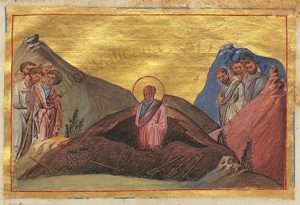
The best external evidence we have of the Acts of John is from the Acts of the Second Council of Nicea in 787 which condemns the text and calls for its destruction (editions of all sources in Junod and Kaestli 1983). It describes two scenes: the painting of John (chs. 26–29) and the Hymn of the Cross (87–105). The first of these stories is found among several episodes added in varying degrees to manuscripts of the Acts of John by Prochorus (CANT 218; ECCA 203) the other is from a single “Act” in a manuscript from Vienna (Österreichische Nationalbibliothek, Cod. hist. gr. 63). Characters mentioned in this act that appear in other portions derived from Prochorus suggest that at least some of the material is drawn from a common source, though there is no guarantee that this is the same Acts of John from the canon lists and other testimonies. A papyrus from Oxyrhynchus (P. Oxy. 850), paralleled also in the Irish Liber Flavus, provides material that parallels chs. 128–29. As one would expect, the account of John’s death (the Metastasis, not a martyrdom) is more well-attested: presented alone in 5 manuscripts and in another 15 as part of Prochorus or the Acts of John in Rome, as well as translations into Armenian, Coptic-Arabic-Ethiopic, Latin, Georgian, and Church Slavic.
Other texts supply additional stories of John: Acts of John in Rome (CANT 216; ECCA 515; 10 Greek manuscripts), the Syriac History of John (CANT 222; ECCA 934; 16 Syriac and Arabic manuscripts), the Hypomnema of John by Symeon Metaphrastes (CANT 221; ECCA 191), the Encomium on John the Theologian by Pseudo-John Chrysostom (CANT 224; ECCA 370; 5 Greek manuscripts; also in Arabic), and Encomium on John by Nicephorus Blemmydes (ECCA 842; 15 Greek manuscripts). Some of these derivative versions do not shy away from asceticism and the grotesque: the story of the attempted necrophilic rape of Drusiana (chs. 63–86), for example, is found in the widely copied Latin Virtutes Iohannis (CANT 219; ECCA 718) and the Passion of John by Pseudo-Melito (CANT 229; ECCA 944).
As with our other apostles, there are lots of stories of John that weave in and out of the manuscript traditions, including the Story of John and the Robber told by Clement of Alexandria (Quis dives salvetur 42) which is incorporated in the Virtutes Iohannis, the Armenian History of John and James (CANT 223; ECCA 401), and some manuscripts of the History of John. It is possible that some of these stories also belong to the original acts, but at present this can’t be determined. But that shouldn’t prevent scholars from focusing on what we do have, including a very rich manuscript base for Prochorus, which has worth outside of being a vehicle for portions of the Acts of John episodes, yet it has not been given a detailed critical edition and only recently has appeared in English translation (or will, in MNTA 3). Of all the apocryphal acts, John is the one that is most explicitly condemned by church officials, though not until the eighth century, and even then it remained available in some form to the Prochorus copyists and to the copyist of the Vienna manuscript.
Conclusions
Clearly each of the five Great Acts present scholars with distinct challenges. There is no one-size-fits-all approach to their reconstruction, nor to assessments of why they no longer survive in full; the exception, of course, is the Acts of Thomas, which defies all the theories about censorship and catholicization. Thomas is reason enough to stop putting so much stock in patristic descriptions and condemnation of these texts; as with the Infancy Gospel of Thomas, and other gospel texts, their testimony ill-fits the evidence, so we fill in the gaps with speculation, sometimes applying assessments of one text, such as Gregory’s concern over verbosity in the Acts of Andrew, to others. This is part of a larger tendency to impose on the texts a “sameness”—they all began with a commissioning story, they all contained radically ascetic views and gnostic-tinged speeches, and they all concluded with a martyrdom—but none of these assumptions are assured.
The history of apocryphal acts is one of constant compilation, reduction, expansion, and transformation. Some material inevitably did not survive the process, but we should resist accepting patristic statements about the texts’ use by Priscillianists or Manicheans or others as explanations for their demise; sometimes they were just replaced by new forms that better suited the needs of the developing church, and old versions could have been the unlucky victims of fire and war. We need also as a discipline to stop looking to the Greek world as the yardstick for what texts are accepted, or what forms are standard. The Latin versions or the forms in the Egyptian collection are far more plentiful, and far more important to their respective communities, but they receive far less attention from scholars. We should put more of our efforts into exploring the diversity of texts that remain today than trying to “reconstruct” texts that are less meaningful in the history of the composition of both apocrypha and hagiographa.
Bibliography
Bausi, Alessandro. “Alcune osservazioni sul Gadla hawaryat.” Annali dell’Istituto Orientale di Napoli 60–61 (2001–2002): 77–114.
Bonnet, Maximilien, and Richard A. Lipsius, eds. Acta apostolorum apocrypha. 2 vols. in 3 parts. Leipzig: Mendelssohn, 1889–1903. Repr. Hildesheim: Olms, 1959 and 1972.
Eastman, David L. The Ancient Martyrdom Accounts of Peter and Paul. WGRW 39. Atlanta: SBL Press, 2015.
Ehrhard, Albert. Uberlieferung und Bestand der hagiographischen und homiletischen Literatur der griechischen Kirche von den Anfängen bis zum Ende des 16. Jahrhunderts. 3 vols. TU 50–52. Leipzig: Hinrichs, 1937–1952.
Høgel, Christian. Symeon Metaphrastes: Rewriting and Canonization. Copenhagen: Museum Tusculanum Press, 2002.
Junod, Éric, and Jean-Daniel Kaestli. “Le dossier des ‘Actes de Jean’: état de la question et perspectives nouvelles.” ANRW 25,6 (1988): 4293–4362.
____________. Acta Iohannis. CCSA 1–2. Turnhout: Brepols, 1983.
Lipsius, Richard A. Die Apokryphen Apostelgeschichten und Apostellegenden. Ein Beitrag zur altchristlichen Literaturgeschichte. 2 vols. Braunschweig: Schwetschke, 1883–1887
Migne, Jacques Paul. Patrologiae cursus completus: Series graeca. 162 vols. Paris: Cerf, 1857–1886 (select volumes include texts by Symeon Metaphrastes and Nicetas the Paphlagonian).
Otero, Aurelio de Santos. Die handschriftliche Überlieferung der altslavischen Apokryphen. 2 vols. PTS 20 and 23. Berlin: De Gruyter, 1978–1981.
Philippart, Guy. Les légendiers latins et autres manuscrits hagiographiques. Typologie des sources du Moyen Age occidental 24–25. Turnhout: Brepols, 1977.
Poupon, Gerard. “Les Actes de Pierre et leur remaniement.” ANRW 2.25.6 (1988) 4363–82.
Prieur, Jean-Marc. Acta Andreae. 2 vols. CCSA 5–6. Turnhout: Brepols, 1989.
Roze, Jean-Baptiste. La légende dorée. 3 vols. Paris. Ed. Rouveyre, 1902.
